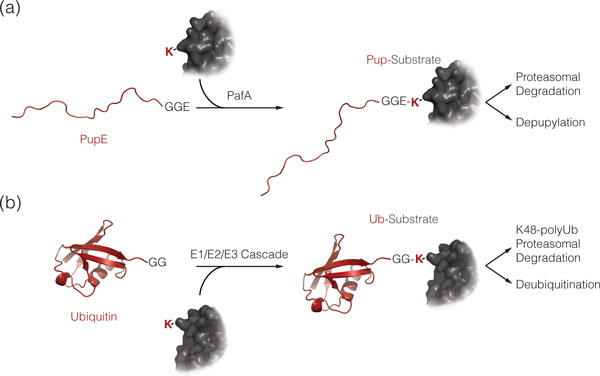Figure 1.
Bacterial pupylation, like eukaryotic ubiquitination, targets proteins for proteasomal degradation. (a,b) Pupylation (a) or ubiquitination (b) of a target protein is shown. Both small protein modifiers (red) are attached to a lysine side chain of a substrate protein (grey). A random coil model of Pup (red) represents its intrinsically disordered state in solution. In contrast, ubiquitin (Ub) adopts a stable β-grasp fold (PDB 1aar). Note that Ub is linked to the substrate lysine via its carboxy-terminal di-glycine-motif ('GG'), while Pup is attached via its carboxy-terminal glutamate ('GGE').

